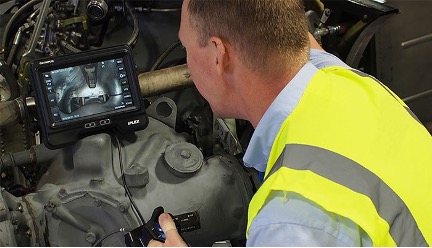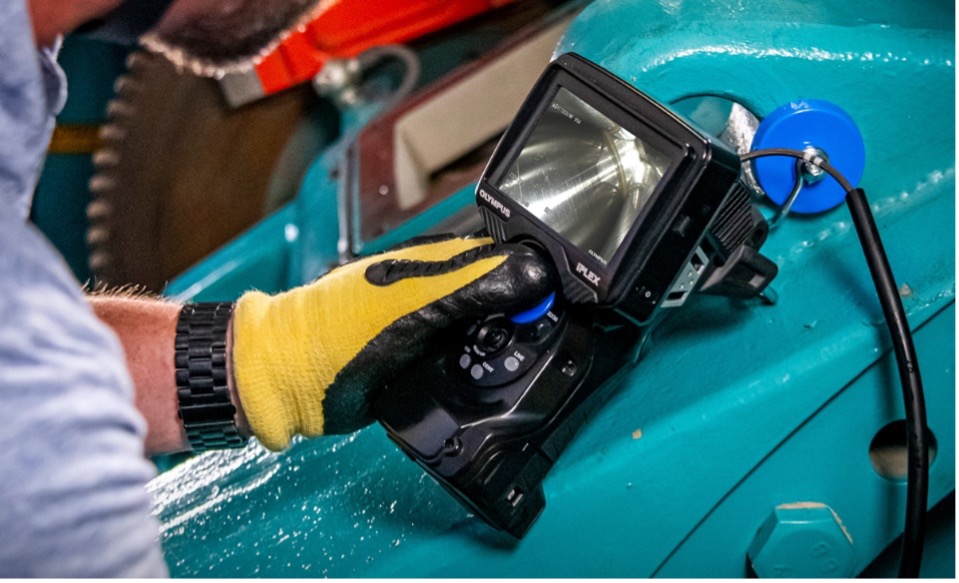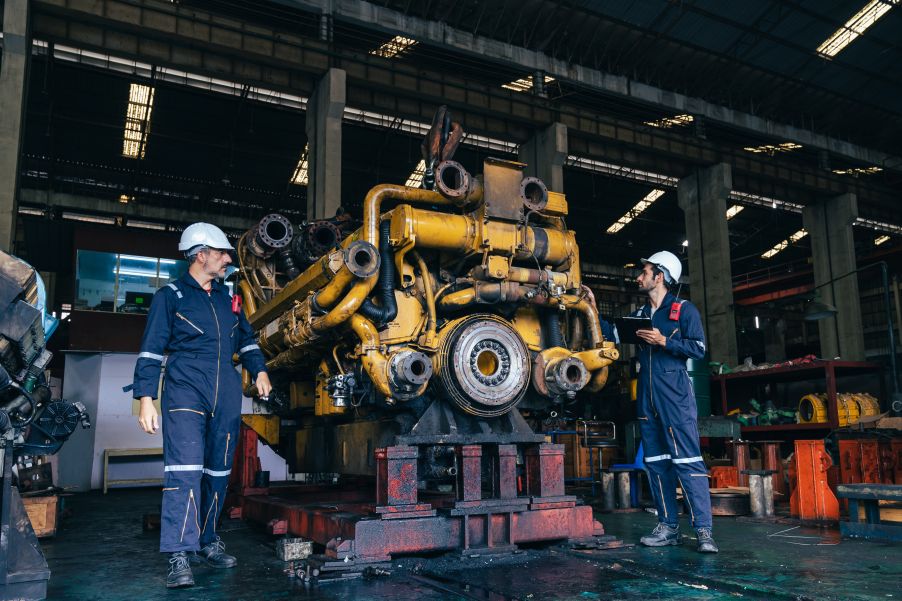This is the third and final blog post in our series on remote visual inspection (RVI) of large reciprocating internal combustion engines (RICE). Previously, we examined the intertwined history of RICE and borescopes and shared our RVI team’s best practices for borescope inspections of RICE. Now, we’ll tackle some common challenges that can occur during this type of inspection and provide additional practical resources for inspectors.
Borescopes are important remote visual inspection (RVI) tools for quality maintenance and inspection. Our IPLEX™ video borescopes enable you to detect key flaws and issue that plague RICE—such as corrosion, plugging, and cracking in vital components—without dismantling the engine or causing damage.
However, a video borescope that isn’t working according to the manufacturer’s specifications can cost you both time and money. It can also affect your ability to conduct a thorough examination and can potentially put a halt to your manufacturing or inspection process. Choosing the best equipment for the job is as critical as having the right techniques.
Borescope Inspection Troubleshooting Guide
Although following best practice guidelines usually provides good results and straightforward inspections, issues can still arise. Here is a troubleshooting guide for the most common challenges.
Oil Obstructing Your View
Most of the engine inspection is done in the presence of lubricant, which may degrade image quality. If that happens, here’s what to do to:
- When the image gets blurry, use a cleaning kit with isopropyl alcohol and cotton swabs to wipe the optical tip. Also, make sure to clean the tip after each use.
- Before starting the inspection, ensure that the O-ring is correctly placed on the distal end to avoid contamination inside the optical tip.
- Use a sealed, oil-clearing tip adapter to see more clearly in oily environments.
- Use a rigid sleeve to avoid contaminating the scope during insertion.

Temperature Risks
The cylinders may still be hot when you begin your inspection, depending on how long the engine has been shut off. This can be a risk for you and the equipment. Here are our RVI team’s recommendations:
- Observe the correct cooldown period for the engine.
- Ensure the engine temperature is below 80 °C (176 °F).
Probe Orientation
It can be challenging to discern the orientation of your image after the borescope has been inserted into the cylinder. Here are some tips to help:
- Use the piston or flame deck features to locate the 12 o’clock orientation inside the cylinder and use it as reference for the inspection.
- Use a rigid sleeve to hold the probe in place.
Organizing Image Files
It can be difficult to manage your inspection images and differentiate between them. Try this image file management technique:
- Create one folder per cylinder and save images of each cylinder accordingly. This makes it simpler to handle files and generate reports following the inspection.
No Picture on the Monitor
If you’re not seeing an image on the video borescope's display, check the following:
- The camera cap is still attached to the probe.
- The battery of the display unit has been charged.
- The monitor is properly connected to the insertion tube. Turn off your borescope, then check the connections to the monitor before turning back on.
Choose the Right Equipment
Video borescopes are excellent devices for the internal inspection of reciprocating engines because of their versatility, image quality, and convenience. We recommend our IPLEX™ G Lite and IPLEX GT videoscopes for RICE inspection.

These models come with a range of features that facilitate engine inspections:
- Sealed, oil clearing tips
- Oil-resistant insertion tube coating
- Portability
- Bright, LED illumination
- Durable, 4-layer construction insertion tube
- Optical tip/insertion tube diameters of 4 mm and 6 mm (0.15 in. to 0.2 in.)
- Insertion tube lengths ranging from 2 m to 10 m (6.6 ft to 32.8 ft)
- TrueFeel™ power-assisted scope tip articulation
- Constant video, even when you forget to press record!
With our IPLEX G Lite and GT video borescopes, you can conduct more efficient inspections, enabling you to find and treat potential damage quickly and effectively.
To find out more about our video borescopes or to book a demonstration, don’t hesitate to get in touch with us .
Additional Resources
You can find all the information from our RICE blog post series conveniently resumed in this application note. If you want to learn more about borescope inspection of reciprocating engines, we also recommend the resources below.
Related Content
Webinar: Borescope Inspection of Diesel and Gas Generators
Webinar: Videoscope Maintenance, Care and Troubleshooting
Webinar: Inspection with Long Videoscopes—Technology and Best Practices


